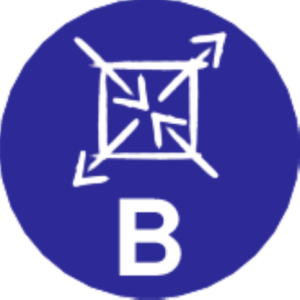2025
|
Wang, Z.; Cui, X.; Treu, T.; Guo, J.; Liu, X.; Klinger, M.; Heil, C.; Ma, N.; Sheng, X.; Deng, Z.; Lu, X.; Wang, X.; Li, W.; Gegenwart, P.; Jin, C.; Zhao, K. Antiferromagnetic ordering and critical behavior induced giant magnetocaloric effect in distorted kagome lattice Gd3BWO9 Journal Article Phys. Rev. Mater. 9, 094407 (2025). @article{wang_antiferromagnetic_2025,
title = {Antiferromagnetic ordering and critical behavior induced giant magnetocaloric effect in distorted kagome lattice Gd_{3}BWO_{9}},
author = {Z. Wang and X. Cui and T. Treu and J. Guo and X. Liu and M. Klinger and C. Heil and N. Ma and X. Sheng and Z. Deng and X. Lu and X. Wang and W. Li and P. Gegenwart and C. Jin and K. Zhao},
url = {https://link.aps.org/doi/10.1103/7l6y-hdw5},
doi = {10.1103/7l6y-hdw5},
year = {2025},
date = {2025-09-16},
urldate = {2025-09-01},
journal = {Phys. Rev. Mater.},
volume = {9},
number = {9},
pages = {094407},
keywords = {},
pubstate = {published},
tppubtype = {article}
}
|  |
Telang, P.; Treu, T.; Klinger, M.; Tsirlin, A. A.; Gegenwart, P.; Jesche, A. Adiabatic demagnetization refrigeration with antiferromagnetically ordered NaGdP2O7 Journal Article Phys. Rev. B 111, 064431 (2025). @article{telang_adiabatic_2025,
title = {Adiabatic demagnetization refrigeration with antiferromagnetically ordered NaGdP_{2}O_{7}},
author = {P. Telang and T. Treu and M. Klinger and A. A. Tsirlin and P. Gegenwart and A. Jesche},
url = {https://link.aps.org/doi/10.1103/PhysRevB.111.064431},
doi = {10.1103/PhysRevB.111.064431},
year = {2025},
date = {2025-02-28},
urldate = {2025-02-01},
journal = {Phys. Rev. B},
volume = {111},
number = {6},
pages = {064431},
keywords = {},
pubstate = {published},
tppubtype = {article}
}
|  |
Magar, A.; Somesh, K.; Saravanan, M. P.; Sichelschmidt, J.; Skourski, Y.; Telling, M. T. F.; Ginga, V. A.; Tsirlin, A. A.; Nath, R. Proximate spin-liquid behavior in the double trillium lattice antiferromagnet K2Co2(SO4)3 Unpublished (2025), arXiv.2508.07687. @unpublished{magar_proximate_2025,
title = {Proximate spin-liquid behavior in the double trillium lattice antiferromagnet K_{2}Co_{2}(SO_{4})_{3}},
author = {A. Magar and K. Somesh and M. P. Saravanan and J. Sichelschmidt and Y. Skourski and M. T. F. Telling and V. A. Ginga and A. A. Tsirlin and R. Nath},
url = {https://arxiv.org/abs/2508.07687},
doi = {10.48550/arXiv.2508.07687},
year = {2025},
date = {2025-08-11},
urldate = {2025-08-11},
abstract = {We report proximate quantum spin liquid behavior in K2Co2(SO4)3 with the magnetic Co2+ ions embedded on a highly frustrated three-dimensional double trillium lattice. Single-crystal and high-resolution synchrotron powder x-ray diffraction experiments reveal a structural phase transition at Tt=125K from high-temperature cubic to low-temperature monoclinic phase with the three-fold superstructure. Magnetization and heat capacity consistently show the formation of the Jee=1/2 state of Co2+ below 50 K. In zero field, K2Co2(SO4)3 shows signatures of static magnetic order formed below T*=0.6K, but muon spin relaxation experiments reveal a large fluctuating component that persists down to at least 50mK, reminiscent of quantum spin liquid (QSL). Static order is completely suppressed in the small magnetic field of 1T, and low-temperature heat capacity demonstrates the Tˆ2 behavior above this field, another fingerprint of QSL. Ab initio calculations show a competition of several antiferromagnetic couplings that render K2Co2(SO4)3 a promising pseudospin-1/2 material for studying quantum magnetism in the double trillium lattice geometry.},
note = {arXiv.2508.07687},
keywords = {},
pubstate = {published},
tppubtype = {unpublished}
}
We report proximate quantum spin liquid behavior in K2Co2(SO4)3 with the magnetic Co2+ ions embedded on a highly frustrated three-dimensional double trillium lattice. Single-crystal and high-resolution synchrotron powder x-ray diffraction experiments reveal a structural phase transition at Tt=125K from high-temperature cubic to low-temperature monoclinic phase with the three-fold superstructure. Magnetization and heat capacity consistently show the formation of the Jee=1/2 state of Co2+ below 50 K. In zero field, K2Co2(SO4)3 shows signatures of static magnetic order formed below T*=0.6K, but muon spin relaxation experiments reveal a large fluctuating component that persists down to at least 50mK, reminiscent of quantum spin liquid (QSL). Static order is completely suppressed in the small magnetic field of 1T, and low-temperature heat capacity demonstrates the Tˆ2 behavior above this field, another fingerprint of QSL. Ab initio calculations show a competition of several antiferromagnetic couplings that render K2Co2(SO4)3 a promising pseudospin-1/2 material for studying quantum magnetism in the double trillium lattice geometry. |  |
Schilberth, F.; DeFreitas, L.; Zhao, K.; LeMardelé, F.; Mohelsky, I.; Orlita, M.; Gegenwart, P.; Chen, H.; Kézsmárki, I.; Bordács, S. Large magnetoreflectance and optical anisotropy due to 4f flat bands in the frustrated kagome magnet HoAgGe Unpublished (2025), arXiv.2504.10274. @unpublished{schilberth_large_2025,
title = {Large magnetoreflectance and optical anisotropy due to 4f flat bands in the frustrated kagome magnet HoAgGe},
author = {F. Schilberth and L. DeFreitas and K. Zhao and F. LeMardelé and I. Mohelsky and M. Orlita and P. Gegenwart and H. Chen and I. Kézsmárki and S. Bordács},
url = {https://arxiv.org/abs/2504.10274},
doi = {10.48550/arXiv.2504.10274},
year = {2025},
date = {2025-04-14},
urldate = {2025-04-01},
abstract = {We report peculiar optical properties of the frustrated itinerant magnet HoAgGe, which exhibits multiple magnetically ordered states obeying the kagome spin-ice rule. The optical conductivity is surprisingly higher for light polarization perpendicular to the kagome plane, both for the free carrier response and the interband transitions. The latter ones have strong contributions from Ho 4f flat bands located near the Fermi level, as revealed by our textbackslashtextitab initio calculations, explaining the unusual anisotropy of the optical properties and the pronounced temperature dependence of the interband transitions for out–of–plane light polarization. The key role of Ho 4f states is further supported by the large variation of the reflectivity upon the metamagnetic transitions, that follows the field dependence of the magnetization, in contrast to that of the dc magnetotransport data. Such heavy-electron bands near the Fermi level offer an efficient way to control transport and optical properties.},
note = {arXiv.2504.10274},
keywords = {},
pubstate = {published},
tppubtype = {unpublished}
}
We report peculiar optical properties of the frustrated itinerant magnet HoAgGe, which exhibits multiple magnetically ordered states obeying the kagome spin-ice rule. The optical conductivity is surprisingly higher for light polarization perpendicular to the kagome plane, both for the free carrier response and the interband transitions. The latter ones have strong contributions from Ho 4f flat bands located near the Fermi level, as revealed by our textbackslashtextitab initio calculations, explaining the unusual anisotropy of the optical properties and the pronounced temperature dependence of the interband transitions for out–of–plane light polarization. The key role of Ho 4f states is further supported by the large variation of the reflectivity upon the metamagnetic transitions, that follows the field dependence of the magnetization, in contrast to that of the dc magnetotransport data. Such heavy-electron bands near the Fermi level offer an efficient way to control transport and optical properties. |  |
Shen, B.; Du, F.; Breitner, F.; Ginga, V. A.; Uykur, E.; Tsirlin, A. A.; Gegenwart, P. Pressure-induced strange metal phase in a metallic kagome ferromagnet Unpublished (2025), arXiv.2503.09524. @unpublished{shen_pressure-induced_2025,
title = {Pressure-induced strange metal phase in a metallic kagome ferromagnet},
author = {B. Shen and F. Du and F. Breitner and V. A. Ginga and E. Uykur and A. A. Tsirlin and P. Gegenwart},
url = {https://arxiv.org/abs/2503.09524},
doi = {10.48550/arXiv.2503.09524},
year = {2025},
date = {2025-03-12},
urldate = {2025-03-12},
abstract = {Strange metallicity with T-linear electrical resistance preceding high-Tc superconductivity remains an enigmatic, yet crucial, signature of correlation physics. Using electrical transport and magnetization measurements up to 50 GPa, we show that such a strange-metal phase is formed in pressurized kagome ferromagnet CrNiAs. In contrast to other kagome materials, a linear suppression of the Curie temperature is found, with the ferromagnetic quantum critical point at pc=12.5GPa. Remarkably, from pc up to the highest measured pressure, characteristic strange-metal behavior is observed, whereas magnetic field reinstates the Fermi liquid. Electronic structure calculations reveal robust weakly dispersive bands persisting unchanged beyond pc, possibly at the origin of the T-linear electrical resistance. This establishes pressurized kagome ferromagnets as an intriguing platform for strange-metal behavior.},
note = {arXiv.2503.09524},
keywords = {},
pubstate = {published},
tppubtype = {unpublished}
}
Strange metallicity with T-linear electrical resistance preceding high-Tc superconductivity remains an enigmatic, yet crucial, signature of correlation physics. Using electrical transport and magnetization measurements up to 50 GPa, we show that such a strange-metal phase is formed in pressurized kagome ferromagnet CrNiAs. In contrast to other kagome materials, a linear suppression of the Curie temperature is found, with the ferromagnetic quantum critical point at pc=12.5GPa. Remarkably, from pc up to the highest measured pressure, characteristic strange-metal behavior is observed, whereas magnetic field reinstates the Fermi liquid. Electronic structure calculations reveal robust weakly dispersive bands persisting unchanged beyond pc, possibly at the origin of the T-linear electrical resistance. This establishes pressurized kagome ferromagnets as an intriguing platform for strange-metal behavior. |  |
2024
|
Tang, N.; Gen, M.; Rotter, M.; Man, H.; Matsuhira, K.; Matsuo, A.; Kindo, K.; Ikeda, A.; Matsuda, Y.; Gegenwart, P.; Nakatsuji, S.; Kohama, Y. Crystal field magnetostriction of spin ice under ultrahigh magnetic fields Journal Article Phys. Rev. B 110, 214414 (2024). @article{tang_crystal_2024,
title = {Crystal field magnetostriction of spin ice under ultrahigh magnetic fields},
author = {N. Tang and M. Gen and M. Rotter and H. Man and K. Matsuhira and A. Matsuo and K. Kindo and A. Ikeda and Y. Matsuda and P. Gegenwart and S. Nakatsuji and Y. Kohama},
url = {https://link.aps.org/doi/10.1103/PhysRevB.110.214414},
doi = {10.1103/PhysRevB.110.214414},
year = {2024},
date = {2024-12-09},
urldate = {2024-12-01},
journal = {Phys. Rev. B},
volume = {110},
number = {21},
pages = {214414},
abstract = {We present a comprehensive study of the magnetoelastic properties of the Ising pyrochlore oxide Ho2Ti2O7, known as spin ice, by means of high-field magnetostriction measurements and numerical calculations. When a magnetic field is applied along the crystallographic ⟨111⟩ axis, the longitudinal magnetostriction exhibits a broad maximum in the low-field regime around 30 T, followed by a dramatic lattice contraction due to crystal-field (CF) level crossing at 𝐵cf∼65 T. The transverse magnetostriction exhibits a contrasting behavior, highlighting the anisotropic nature of the CF striction. By applying a magnetic field at varying sweep rates, we identify distinct timescales of spin dynamics that are relevant to monopole formation and annihilation, as well as CF-phonon dynamics. Our mean-field calculations, based on a point-charge model, successfully reproduce the overall magnetostriction behavior, revealing the competition between the exchange striction and CF striction. A signature of the CF level crossing is also observed through adiabatic magnetocaloric-effect measurements, consistent with our magnetostriction data.},
keywords = {},
pubstate = {published},
tppubtype = {article}
}
We present a comprehensive study of the magnetoelastic properties of the Ising pyrochlore oxide Ho2Ti2O7, known as spin ice, by means of high-field magnetostriction measurements and numerical calculations. When a magnetic field is applied along the crystallographic ⟨111⟩ axis, the longitudinal magnetostriction exhibits a broad maximum in the low-field regime around 30 T, followed by a dramatic lattice contraction due to crystal-field (CF) level crossing at 𝐵cf∼65 T. The transverse magnetostriction exhibits a contrasting behavior, highlighting the anisotropic nature of the CF striction. By applying a magnetic field at varying sweep rates, we identify distinct timescales of spin dynamics that are relevant to monopole formation and annihilation, as well as CF-phonon dynamics. Our mean-field calculations, based on a point-charge model, successfully reproduce the overall magnetostriction behavior, revealing the competition between the exchange striction and CF striction. A signature of the CF level crossing is also observed through adiabatic magnetocaloric-effect measurements, consistent with our magnetostriction data. |  |
Shen, B.; Breitner, F.; Gegenwart, P.; Jesche, A. Strong Enhancement of Magnetic Coercivity Induced by Uniaxial Stress Journal Article Phys. Rev. Lett. 133, 186702 (2024). @article{shen_strong_2024,
title = {Strong Enhancement of Magnetic Coercivity Induced by Uniaxial Stress},
author = {B. Shen and F. Breitner and P. Gegenwart and A. Jesche},
doi = {10.1103/PhysRevLett.133.186702},
year = {2024},
date = {2024-10-28},
urldate = {2024-10-28},
journal = {Phys. Rev. Lett.},
volume = {133},
number = {18},
pages = {186702},
abstract = {The performance of permanent magnets is intricately tied to their magnetic hysteresis loop. In this study, we investigate the heavy-fermion ferromagnet CeAgSb2 through magnetization measurements under uniaxial stress. We observe a 2400% increase in magnetic coercivity with just a modest stress of approximately 1 kbar. This effect persists even after pressure release, attributable to stress-induced defects that efficiently pin domain walls. Other magnetic properties such as ordering temperature and saturation moment exhibit only weak pressure dependencies and display full reversibility. Our findings offer a promising route for increasing coercive field strength and enhancing the energy product in ferromagnetic materials and are potentially applicable to a broad spectrum of commercial or emerging magnetic applications.},
keywords = {},
pubstate = {published},
tppubtype = {article}
}
The performance of permanent magnets is intricately tied to their magnetic hysteresis loop. In this study, we investigate the heavy-fermion ferromagnet CeAgSb2 through magnetization measurements under uniaxial stress. We observe a 2400% increase in magnetic coercivity with just a modest stress of approximately 1 kbar. This effect persists even after pressure release, attributable to stress-induced defects that efficiently pin domain walls. Other magnetic properties such as ordering temperature and saturation moment exhibit only weak pressure dependencies and display full reversibility. Our findings offer a promising route for increasing coercive field strength and enhancing the energy product in ferromagnetic materials and are potentially applicable to a broad spectrum of commercial or emerging magnetic applications. |  |
Solana-Madruga, E.; Mentre, O.; Tsirlin, A. A.; Huve, M.; Khalyavin, D.; Ritter, C.; Arevalo-Lopez, A. M. CoVO3 High-Pressure Polymorphs: To Order or Not to Order? Journal Article Adv. Sci. 11, 2307766 (2024). @article{solana-madruga_covo_3_2023,
title = {CoVO_{3} High-Pressure Polymorphs: To Order or Not to Order?},
author = {E. Solana-Madruga and O. Mentre and A. A. Tsirlin and M. Huve and D. Khalyavin and C. Ritter and A. M. Arevalo-Lopez},
doi = {10.1002/advs.202307766},
year = {2024},
date = {2024-03-06},
urldate = {2023-12-01},
journal = {Adv. Sci.},
volume = {11},
number = {9},
pages = {2307766},
abstract = {Materials properties are determined by their compositions and structures. In ABO(3) oxides different cation orderings lead to mainly perovskite- or corundum like derivatives with exciting physical properties. Sometimes, a material can be stabilized in more than one structural modification, providing a unique opportunity to explore structure-properties relationship. Here, CoVO3 obtained in both ilmenite-(CoVO3-I) and LiNbO3-type (CoVO3-II) polymorphs at moderate (8-12 GPa) and high pressures (22 GPa), respectively are presented. Their distinctive cation distributions affect drastically the magnetic properties as CoVO3-II shows a cluster-glass behavior while CoVO3-I hosts a honeycomb zigzag magnetic structure in the cobalt network. First principles calculations show that the influence of vanadium is crucial for CoVO3-I, although it is previously considered as non-magnetic in a dimerized spin-singlet state. Contrarily, CoVO3-II shows two independent interpenetrating antiferromagnetic Co- and ferromagnetic V-hcp sublattices, which intrinsically frustrate any possible magnetic order. CoVO3-II is also remarkable as the first oxide crystallizing with the LiNbO3-type structure where both metals contain free d electrons. CoVO3 polymorphs pinpoint therefore as well to a much broader phase field of high-pressure A-site Cobaltites.},
keywords = {},
pubstate = {published},
tppubtype = {article}
}
Materials properties are determined by their compositions and structures. In ABO(3) oxides different cation orderings lead to mainly perovskite- or corundum like derivatives with exciting physical properties. Sometimes, a material can be stabilized in more than one structural modification, providing a unique opportunity to explore structure-properties relationship. Here, CoVO3 obtained in both ilmenite-(CoVO3-I) and LiNbO3-type (CoVO3-II) polymorphs at moderate (8-12 GPa) and high pressures (22 GPa), respectively are presented. Their distinctive cation distributions affect drastically the magnetic properties as CoVO3-II shows a cluster-glass behavior while CoVO3-I hosts a honeycomb zigzag magnetic structure in the cobalt network. First principles calculations show that the influence of vanadium is crucial for CoVO3-I, although it is previously considered as non-magnetic in a dimerized spin-singlet state. Contrarily, CoVO3-II shows two independent interpenetrating antiferromagnetic Co- and ferromagnetic V-hcp sublattices, which intrinsically frustrate any possible magnetic order. CoVO3-II is also remarkable as the first oxide crystallizing with the LiNbO3-type structure where both metals contain free d electrons. CoVO3 polymorphs pinpoint therefore as well to a much broader phase field of high-pressure A-site Cobaltites. |  |
Zhao, K.; Tokiwa, Y.; Chen, H.; Gegenwart, P. Discrete degeneracies distinguished by the anomalous Hall effect in a metallic kagome ice compound Journal Article Nat. Phys. 20, 442 (2024). @article{zhao_discrete_2024,
title = {Discrete degeneracies distinguished by the anomalous Hall effect in a metallic kagome ice compound},
author = {K. Zhao and Y. Tokiwa and H. Chen and P. Gegenwart},
doi = {10.1038/s41567-023-02307-w},
year = {2024},
date = {2024-01-01},
urldate = {2024-01-01},
journal = {Nat. Phys.},
volume = {20},
pages = {442},
abstract = {In magnetic crystals, despite the explicit breaking of time-reversal symmetry, two equilibrium states related by time reversal are always energetically degenerate. In ferromagnets, this time-reversal degeneracy is reflected in the hysteresis of the magnetic field dependence of the magnetization and, if metallic, in that of the anomalous Hall effect (AHE). Under time-reversal, both these quantities change signs but not their magnitude. Here we show that a time-reversal-like degeneracy appears in the metallic kagome spin ice HoAgGe when magnetic fields are applied parallel to the kagome plane. We find vanishing hysteresis in the field dependence of the magnetization at low temperature, but finite hysteresis in the field-dependent AHE. This suggests the emergence of states with nearly the same energy and net magnetization but different sizes of the AHE and of the longitudinal magnetoresistance. By analysing the experimental data and a minimal tight-binding model, we identify a time-reversal-like operation connecting these near-degenerate states, which is related to the non-trivial distortion of the kagome lattice in HoAgGe. Our work demonstrates the diagnostic power of transport phenomena for identifying hidden symmetries in frustrated spin systems. Transport measurements of the metallic kagome spin ice HoAgGe show that it has an emergent discrete symmetry that is not apparent from measurements of its magnetization.},
keywords = {},
pubstate = {published},
tppubtype = {article}
}
In magnetic crystals, despite the explicit breaking of time-reversal symmetry, two equilibrium states related by time reversal are always energetically degenerate. In ferromagnets, this time-reversal degeneracy is reflected in the hysteresis of the magnetic field dependence of the magnetization and, if metallic, in that of the anomalous Hall effect (AHE). Under time-reversal, both these quantities change signs but not their magnitude. Here we show that a time-reversal-like degeneracy appears in the metallic kagome spin ice HoAgGe when magnetic fields are applied parallel to the kagome plane. We find vanishing hysteresis in the field dependence of the magnetization at low temperature, but finite hysteresis in the field-dependent AHE. This suggests the emergence of states with nearly the same energy and net magnetization but different sizes of the AHE and of the longitudinal magnetoresistance. By analysing the experimental data and a minimal tight-binding model, we identify a time-reversal-like operation connecting these near-degenerate states, which is related to the non-trivial distortion of the kagome lattice in HoAgGe. Our work demonstrates the diagnostic power of transport phenomena for identifying hidden symmetries in frustrated spin systems. Transport measurements of the metallic kagome spin ice HoAgGe show that it has an emergent discrete symmetry that is not apparent from measurements of its magnetization. |  |
2023
|
Mohanty, S.; Islam, S. S.; Winterhalter-Stocker, N.; Jesche, A.; Simutis, G.; Wang, Ch.; Guguchia, Z.; Sichelschmidt, J.; Baenitz, M.; Tsirlin, A. A.; Gegenwart, P.; Nath, R. Disordered ground state in the spin-orbit coupled Jeff = 1/2 distorted honeycomb magnet BiYbGeO5 Journal Article Phys. Rev. B 108, 134408 (2023). @article{mohanty_disordered_2023,
title = {Disordered ground state in the spin-orbit coupled J_{eff} = 1/2 distorted honeycomb magnet BiYbGeO_{5}},
author = {S. Mohanty and S. S. Islam and N. Winterhalter-Stocker and A. Jesche and G. Simutis and Ch. Wang and Z. Guguchia and J. Sichelschmidt and M. Baenitz and A. A. Tsirlin and P. Gegenwart and R. Nath},
doi = {10.1103/PhysRevB.108.134408},
year = {2023},
date = {2023-01-01},
urldate = {2023-01-01},
journal = {Phys. Rev. B},
volume = {108},
number = {13},
pages = {134408},
abstract = {We delineate quantum magnetism in the strongly spin-orbit coupled distorted honeycomb lattice antiferromagnet BiYbGeO5. Our magnetization and heat capacity measurements reveal that its low-temperature behavior is well described by an effective J(eff) = 1/2 Kramers doublet of Yb3+. The ground state is nonmagnetic with a tiny spin gap. Temperature-dependent magnetic susceptibility, magnetization isotherm, and heat capacity can be modeled well assuming isolated spin dimers with anisotropic exchange interactions J(Z) similar or equal to 2.6 K and J(XY) similar or equal to 1.3 K. Heat capacity measurements backed by muon spin relaxation suggest the absence of magnetic long-range order down to at least 80 mK both in zero field and in applied fields. This sets BiYbGeO5 apart from Yb2Si2O7, with its unusual regime of magnon Bose-Einstein condensation, and suggests negligible interdimer couplings, despite only a weak structural deformation of the honeycomb lattice.},
keywords = {},
pubstate = {published},
tppubtype = {article}
}
We delineate quantum magnetism in the strongly spin-orbit coupled distorted honeycomb lattice antiferromagnet BiYbGeO5. Our magnetization and heat capacity measurements reveal that its low-temperature behavior is well described by an effective J(eff) = 1/2 Kramers doublet of Yb3+. The ground state is nonmagnetic with a tiny spin gap. Temperature-dependent magnetic susceptibility, magnetization isotherm, and heat capacity can be modeled well assuming isolated spin dimers with anisotropic exchange interactions J(Z) similar or equal to 2.6 K and J(XY) similar or equal to 1.3 K. Heat capacity measurements backed by muon spin relaxation suggest the absence of magnetic long-range order down to at least 80 mK both in zero field and in applied fields. This sets BiYbGeO5 apart from Yb2Si2O7, with its unusual regime of magnon Bose-Einstein condensation, and suggests negligible interdimer couplings, despite only a weak structural deformation of the honeycomb lattice. |  |
Bader, V. P.; Ritter, C.; Papke, E.; Gegenwart, P.; Tsirlin, A. A. Geometrical frustration and incommensurate magnetic order in Na3RuO4 with two triangular motifs Journal Article Phys. Rev. B 108, 144424 (2023). @article{bader_geometrical_2023,
title = {Geometrical frustration and incommensurate magnetic order in Na_{3}RuO_{4} with two triangular motifs},
author = {V. P. Bader and C. Ritter and E. Papke and P. Gegenwart and A. A. Tsirlin},
doi = {10.1103/PhysRevB.108.144424},
year = {2023},
date = {2023-01-01},
urldate = {2023-01-01},
journal = {Phys. Rev. B},
volume = {108},
number = {14},
pages = {144424},
keywords = {},
pubstate = {published},
tppubtype = {article}
}
|  |











